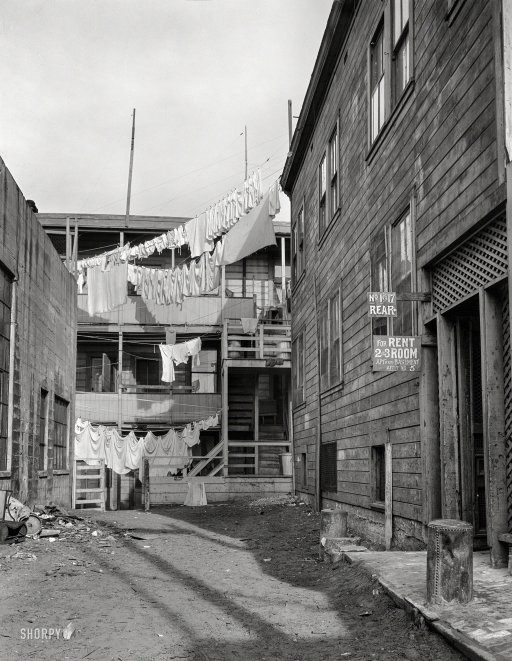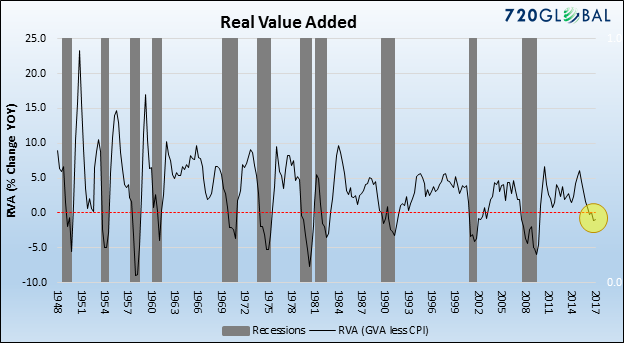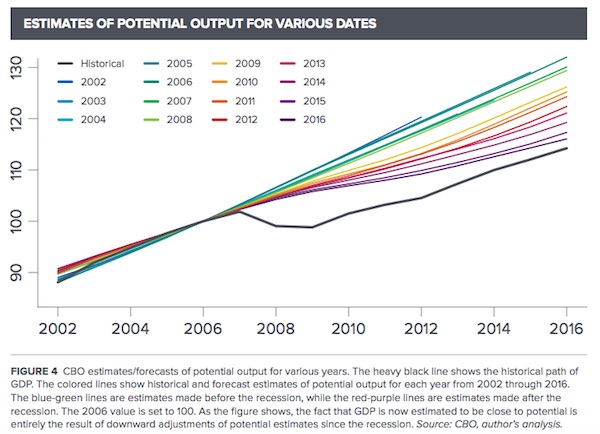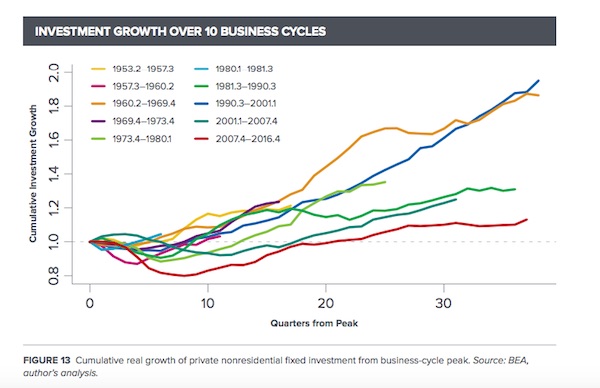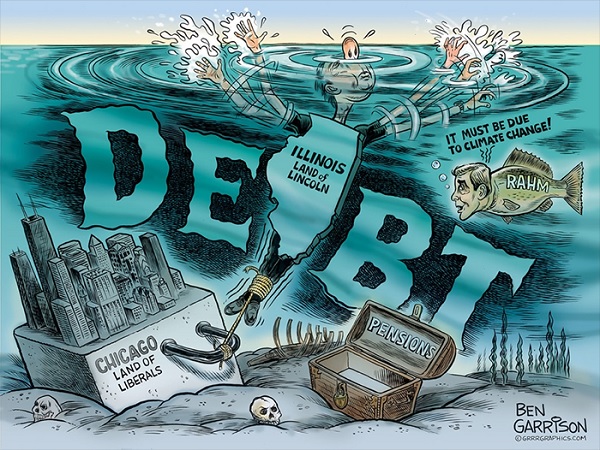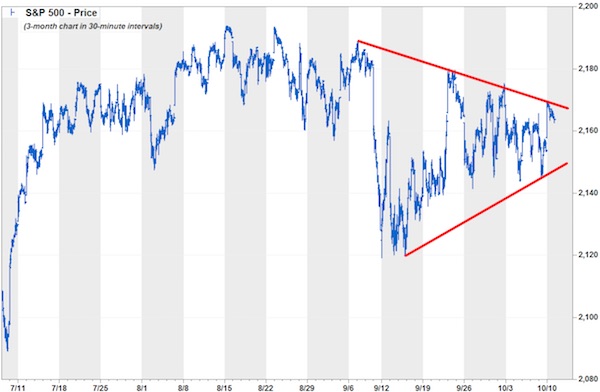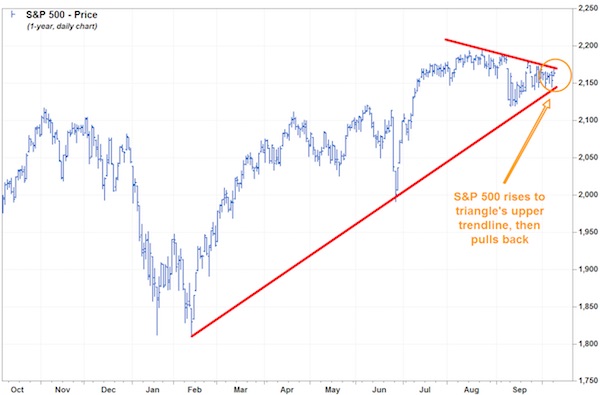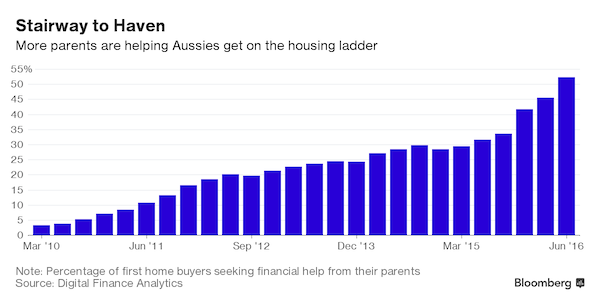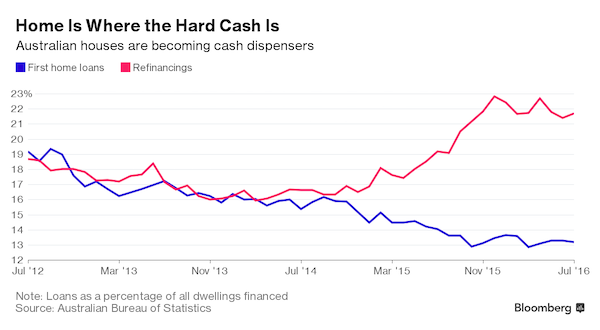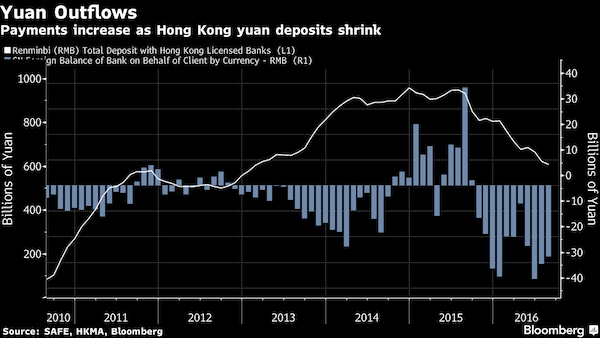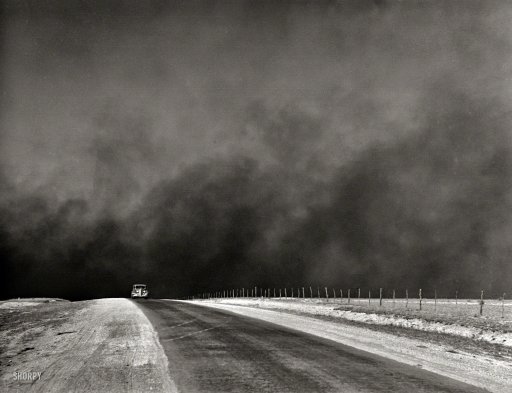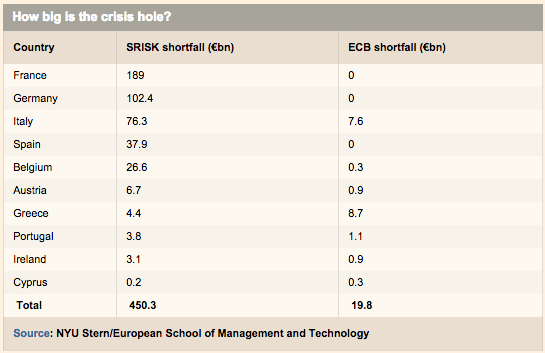
DPC The Mammoth Oak at Pass Christian, Mississippi 1900



” .. with US crude at or below $70, “no [shale] basin is safe” from cuts in drilling activity.”
• Market Rout As Oil Slide Rocks Energy Groups (FT)
Shares in the world’s biggest energy groups have tumbled in a market rout as plunging oil prices put at risk billions of dollars of investment and jeopardised future supplies of crude. The sharp slide in the price of Brent oil after Opec’s decision not to cut output triggered warnings that oil companies would cut as much as $100bn of capital spending in response, imperilling the US shale bonanza and threatening much Arctic oil exploration. Meanwhile oil’s fall continued to play havoc with the currencies of oil exporting countries, especially Russia. At one point on Friday, the rouble slid to a record low.
Leonid Fedun, vice-president of Lukoil, Russia’s second largest crude producer, told the Financial Times that Opec was trying to turn the US shale oil “boom” into a “bust” for smaller producers. He compared the surge in North American shale to the dotcom and subprime mortgage booms, and said Opec’s objective now was “to get small producers with large debts and low efficiency to pack up and leave the market”. Opec said on Thursday that it was leaving its output ceiling of 30m barrels a day unchanged, prompting a swift 8% drop in the oil price, which was already down by nearly 40% since mid-June. The move showed that Saudi Arabia, Opec’s largest producer and effective leader, had decided to relinquish its traditional role of balancing the oil market by increasing or reducing output, letting prices do the job instead, analysts said. “We cannot overstate what a dramatic and fundamental change this is for the oil market,” said Mike Wittner, senior oil analyst at Société Générale.
Friday’s brutal sell-off in the US and across Europe hit shares in the oil majors, the big oil services companies that supply them, as well as the smaller explorers most exposed to the plunge in crude. ExxonMobil fell 4.3%, Chevron 5.4% and oilfield services group Halliburton 11.1%. They recovered slightly by the close. But the slide could bring relief for motorists. The price fall has sent a chill through the US shale sector, which had driven US oil production to its highest level in more than three decades. Analysts at Tudor Pickering Holt, the energy investment bank, warned that, with US crude at or below $70, “no basin is safe” from cuts in drilling activity. WTI, the US benchmark, is currently trading below $67 a barrel. The Bakken shale of North Dakota and the Mississippian Lime region of Oklahoma would be among the regions bearing the initial brunt of the slowdown, they said.
Read more …

“It’s not just the Saudis who could get much poorer from the oil price free fall. Everyone could suffer if the collapse triggers a wave of defaults through the high-yield debt market, and in turn, hits stocks.”
• Could Oil Collapse Cause Next Credit Crisis? (CNBC)
It’s not just the Saudis who could get much poorer from the oil price free fall. Everyone could suffer if the collapse triggers a wave of defaults through the high-yield debt market, and in turn, hits stocks. The first to fall: the banks that were last hit by the housing crisis. Why could that happen? Well, energy companies make up anywhere from 15 to 20% of all U.S. junk debt, according to various sources. In fact, they’ve been the most prolific issuers of high-yield debt over the years, as their share of that market was just 5% in 2005. The oil bull market we once knew filled their coffers and made executives feel confident they could borrow more and more money.
Much of that high-yield debt is now on the books of banks, asset managers and pension funds. What’s more, banks are even more dependent on a happy junk market as they make a market in the bonds. Any collapse in prices could cause bidders to run and liquidity to dry up. They also issue high-yield debt exchange-traded funds, which have been wildly popular with investors over the last decade. If that popularity turns into heavy selling, the banks may not be able to sell the bonds fast enough to meet the pricing demands of the ETF, traders said. “I’ve no doubt the (high-yield) sector will get bad, but the worry is that because of the general lack of liquidity in high yield overall that it could be an environment that makes contagion very much a possibility,” said James Farro of Coghlan Capital.
There are cracks, but certainly no contagion yet. From its high above $100 this June, WTI crude is down more than 36% and counting. The Credit Suisse High Yield Bond Fund, one of the many proxies for junk debt, is off 6% over that period. Yet stocks in the bank sector are up more than 8% since June. And the Dow Jones industrial average is more than 6% higher. “This is the one thing I’ve seen over and over again,” said Larry McDonald, head of U.S strategy at Newedge USA’s macro group. “When high yield underperforms equity, a major credit event occurs. It’s the canary in the coal mine.” [..] During the last high-yield collapse, which centered around debt tied to the housing sector, Citigroup lost 63% of its value in the following 60 days, Kensho [a quantitative analytics tool] shows. Bank of America was cut in half.
Read more …

Bloomberg doesn’t expect too much brain activity in its readers: ” ..only about 4% of shale production needs $80 or more to be profitable”.
• OPEC Gusher to Hit Weakest Players, From Wildcatters to Iran (Bloomberg)
The refusal of Saudi Arabia and its OPEC allies to curb crude oil output in the face of plummeting prices has set the energy world on a painful course that will leave the weakest behind, from governments to U.S. wildcatters. A grand experiment has begun, one in which the cartel of producing nations – sometimes called the central bank of oil – is leaving the market to decide who is strongest and how to cut as much as 2 million barrels a day of surplus supply. Oil patch executives including billionaire Harold Hamm have vowed to drill on, asserting they can profit well below $70 a barrel, with output unlikely to fall for at least a year. Marginal producers in less profitable U.S. shale areas, as well as countries from Iran to Russia and operations from Canada to Norway will see the knife sooner, according to analyses by Wells Fargo, IHS and ITG Investment Research. “We’re in a very nerve-wracking environment right now and will be for probably the next couple of years,” Jamie Webster, senior director at IHS said today in a phone interview.
“This is a different game. This isn’t just about additional barrels, this is about barrels that are going to keep coming and keep coming.” Investors punished oil producers, as Hamm’s Continental fell 20%, the most in six years, amid a swift fall in crude to below $70 for the first time since 2010. Exxon Mobil fell 4.2% to close at $90.54. Talisman was down 1.8% at 3:00 p.m. in Toronto after dropping 14% yesterday. A production cut by12-member OPEC would have been the quickest way to tighten the world’s oil supplies and boost prices. In the U.S., supply is expected either to remain flat or rise by almost 1 million barrels a day next year, according to International Energy Agency and ITG. That’s because only about 4% of shale production needs $80 or more to be profitable. Most drilling in the Bakken formation, one of the main drivers of shale oil output, returns cash at or below $42 a barrel, the IEA estimates.
Read more …

Key sentence: “provided the chief cause is a surge in crude supply rather than a collapse in economic demand”. Ambrose needs to do some thinking.
• Oil Drop Is Big Boon For Global Stock Markets, If It Lasts (AEP)
Tumbling oil prices are a bonanza for global stock markets, provided the chief cause is a surge in crude supply rather than a collapse in economic demand. HSCB says the index of world equities rose 25pc on average over the twelve months following a 30pc drop in oil prices, comparable to the latest slide. Equities rose 19pc in real terms. Data stretching back to 1876 is less emphatic but broadly tells the same tale. The S&P 500 index of Wall Street stocks rose by 11pc on average. The equity rally of 1901 was a corker. Yet there were big exceptions. Stock markets continued to fall by 23pc in 1930 after the oil price crash. Much the same happened after the dotcom bust in 2001. On both occasions the forces of global recession overwhelmed the stimulus or “tax cut” effect for consumers and non-oil companies of lower energy costs. Roughly one third of the current oil slump is a shortfall in expected demand, caused by China’s industrial slowdown and Europe’s austerity trap.
The other two thirds are the result of a sudden supply glut, which Saudi Arabia and the Gulf states have so far chosen not to offset by cutting output. This episode looks relatively benign. Nick Kounis from ABN Amro says it will add $550bn of stimulus to world markets. “That is fantastic news for the global economy,” he said. But it comes at a time when stocks are already high if measured by indicators of underlying value. The Schiller 10-year price earnings ratio is at nose-bleed levels above 27. Tobin’s Q, a gauge based on replacement costs, is stretched to near historic highs. Andrew Lapthorne from Societe Generale says the MSCI world index of stocks has risen 38pc over the last three years but reported profits have risen just 3pc. “Valuations, as measured by median price to cash flow ratios, are near historical highs. As US QE has come to an end, depriving the world of $1 trillion printed dollars a year, there are plenty of reasons to be nervous,” he said.
Past patterns may not prove a useful guide this time. Zero rates and QE have distorted all the normal signals. So has the emergence of China as the swing force in global commodity demand. Nor is it certain that this fall in oil prices will endure. Morgan Stanley said the over-supply in the market is “vastly overstated”. Much of the immediate glut is due to a supply surge of 800,000 barrels a day in Libya after export terminals were reopened over the early summer following a truce by tribal militias. This truce is already unravelling. Output has dropped by 400,000 barrels a day since September. “Libya is getting worse by the day,” said Alastair Newton, head of political risk at Nomura. “Iraq is producing at the top of its band, and Russia’s output always goes down in the winter for weather reasons. The 2m barrel surplus could disappear in no time.”
Read more …

Oil has created welfare states with fast surging populations, but no industrial base, no jobs.
• Oil Countries Wasted Chance To Build Strong Economies (Guardian)
Many of the large oil-producing nations such as Saudi Arabia, Kuwait and Venezuela have squandered their chance to build strong and sustainable economies on the proceeds of high oil prices, a leading energy analyst has warned. Fadel Gheit, an oil expert at the Oppenheimer brokerage in New York, said prices at $90 a barrel had allowed nations to temporarily prosper without regard to the cyclical nature of commodity prices. “Many of these countries have failed to diversify their economies. They are welfare states, dependent on high-cost oil without any other real manufacturing, industry or even tourism and now the oil bubble has burst,” he said. Gheit, a former Mobil Oil executive, said the oil producers should have followed the examples of countries such as Japan and South Korea which had built vibrant economies without any natural resources.
The damning view of some of the largest energy producers came as the price of benchmark Brent crude continued to fall and the Oppenheimer analyst believes it will not stop at $70. There is growing concern about the political implications for oil-producing countries of a prolonged slump in prices, especially Iran, Algeria and Venezuela, which have high-cost production and heavy public spending commitments. Russia, which derives half its budget revenue from oil and gas, is already struggling with a collapse in the value of the rouble and an economy fast moving into recession. The Kremlin, which is also struggling with western sanctions over Ukraine, is thought to need an oil price of $105 to balance its budget, according to some estimates.
Iran, also hit by sanctions in the past over its nuclear programme, is heavily dependent on its energy exports and is said to need $140 a barrel to balance its budget. Meanwhile, oil accounts for 95% of Venezuela’s exports. Harvard economists claim its per capita gross domestic product is 2% lower than it was in the 1970s when oil prices were 10 times lower. Gheit says oil producers have been blind to consuming nations reducing their energy intensity and even more importantly that US shale is turning the supply map upside down. “They have failed to see that fracking is like a virus and it’s going to proliferate and it will eventually spread even to Russia and Saudi Arabia.”
Read more …

And deflation.
• OPEC Has Ushered In QE4 (MarketWatch)
Welcome to the new era of QE4. As if on cue, OPEC stepped in just as monetary policy (at least the Fed’s) has dried up. Central bankers have nothing on the oil cartel that did just what everyone expected, but has still managed to crush oil prices. Protest away about the 1% getting richer and how prior QE hasn’t trickled down to those who really need it, but an oil cartel is coming to the rescue of America and others in the world right now. It’s hard to imagine a “more wide-reaching and effective stimulus measure than to lower the cost of gas at the pump for everyone globally,” says Alpari U.K.’s Joshua Mahoney. “For this reason, we are effectively entering the era of QE4, with motorists able to allocate more of their money towards luxury items, while firms are now able to lower costs of production thus impacting the bottom line and raising profits.”
The impact of that could be “bigger than anything that has come before,” says Mahoney, who expects that theory to be tested and proved, via sales on Black Friday and the holiday season overall. In short, a consumer-spending explosion as we race to the malls on a full tank of cheap gas. Tossing in his own two cents in the wake of that OPEC decision, legendary investor Jim Rogers says it’s a “fundamental positive for anybody who uses oil, who uses energy.” Just not great if you’re from Canada, Russia or Australia, he says. Or if you’re the ECB, fretting about price deflation. Or until it starts crushing shale producers.
Read more …

I don’t know what to think of this. I still don’t believe the Saudis would do anything the Americans don’t want them to. But it works as an argument to convince the rest of OPEC, even if he doesn’t mean it.
• Inside OPEC Room, Naimi Declares Price War On US Shale Oil (Reuters)
Saudi Arabia’s oil minister told fellow OPEC members they must combat the U.S. shale oil boom, arguing against cutting crude output in order to depress prices and undermine the profitability of North American producers. Ali al-Naimi won the argument at Thursday’s meeting, against the wishes of ministers from OPEC’s poorer members such as Venezuela, Iran and Algeria which had wanted to cut production to reverse a rapid fall in oil prices. They were not prepared to offer big cuts themselves, and, choosing not to clash with the Saudis and their rich Gulf allies, ultimately yielded to Naimi’s pressure. “Naimi spoke about market share rivalry with the United States. And those who wanted a cut understood that there was no option to achieve it because the Saudis want a market share battle,” said a source who was briefed by a non-Gulf OPEC minister after Thursday’s meeting.
A boom in shale oil production and weaker growth in China and Europe have sent prices down by over a third since June. “You think we were convinced? What else could we do?” said an OPEC delegate from a country that had argued for a cut. Secretary General Abdullah al-Badri effectively confirmed OPEC was entering a battle for market share. Asked on Thursday if the organization had a answer to rising U.S. production, he said: “We answered. We keep the same production. There is an answer here”. OPEC agreed to maintain – a “rollover” in OPEC jargon – its ceiling of 30 million barrels per day, at least 1 million above its own estimate of demand for its oil in the first half of next year. Analysts said the decision not to cut output in the face of drastically falling prices was a strategic shift for OPEC. “It is a brave new world. OPEC is clearly drawing a line in the sand at 30 million bpd. Time will tell who will be left standing,” said Yasser Elguindi of Medley Global Advisors.
Read more …

The Swiss vote on gold tomorrow apparently touches Holland as well: some $2 billion worth of gold, bought by the Swiss when the Nazis stole it from the Dutch central bank, has never been returned. The vote aims at banning the Swiss central bank from letting gold leave the country.
• Will The US Give The Dutch Their Gold Back? (CNBC)
As the Dutch central bank looks to repatriate some of its gold reserves back from the New York Federal Reserve, Dennis Gartman, the editor and publisher of The Gartman Letter, has questioned what reputational damage this could cause for the U.S. The Dutch central bank last week confirmed that it was shipping gold from the U.S. to the Netherlands to “spread its gold stock in a more balanced way”, adding that it would have a “positive effect on public confidence”. It comes after the Germans made a similar move in 2013, indicating that it would transfer 300 tons from New York by 2020. The Bundesbank has surprised many in the industry, however, by only moving 5 tons last year in what it called a “run-up phase of gold repatriation”.
Gartman stressed that it was a complicated issue which “is made all the more complicated by the fact that the Germans have talked about repatriation but have repatriated only a very small sum”. He added that there was a “reputational” problem for the New York Federal Reserve, which could have been quickly and easily handled by a press conference by the bank. Instead, the closely-watched commodities analyst – who conceded that he was not a gold bug – said the silence from the bank concerned him. The Dutch central bank is set to cut the amount of its stock held in New York from 51% to 31%, but keep its reserves in London and Canada unchanged. The bank has been vague on whether the move had already been completed and a spokesperson for the bank couldn’t comment on the proceedings due to the security issues associated with such an operation.
“Were I the Dutch, or the Germans or any country housing gold in the U.S. I’d be asking questions about my gold and I’d be remiss were I not doing so,” Gartman told CNBC via email. “In the end, I suspect that the gold is indeed there; that the Germans will ask for and get their gold repatriated; that the rumors are ill founded and ill advised.” Gartman’s concerns were put to an official at the Bundesbank in February by Germany’s Handelsblatt newspaper. Executive Board Member Carl-Ludwig Thiele refuted rumors that the gold in New York was no longer there, or that the Germans had been given limited access to it. Thiele called it “absurd” and said he had personally seen the reserves.
Read more …

Are the Somali pirates paying attention?
• Swiss, French Call To Bring Home Gold As Dutch Move 122 Tons Out Of US (RT)
The financial crisis in Europe is prompting some nations to repatriate their gold reserves to national vaults. The Netherlands has moved $5 billion worth of gold from New York, and some are calling for similar action from France, Switzerland, and Germany. An unmatched pace of money printing by major central banks has boosted concerns in European countries over the safety of their gold reserves abroad. The Dutch central bank – De Nederlandsche Bank – was one of the latest to make the move. The bank announced last Friday that it moved a fifth of its total 612.5-metric-ton gold reserve from New York to Amsterdam earlier in November. It was done in an effort to redistribute the gold stock in “a more balanced way,” and to boost public confidence, the bank explained.
“With this adjustment the Dutch Central Bank joins other banks that are keeping a larger share of their gold supply in their own country,” the bank said in a statement. “In addition to a more balanced division of the gold reserves…this may also contribute to a positive confidence effect with the public.” Dutch gold reserves are now divided as follows: 31% in Amsterdam, 31% in New York, 20% in Ottawa, Canada and 18% in London. Meanwhile, Switzerland has organized the ‘Save Our Swiss Gold’ referendum, which is taking place on November 30. If passed, it would force the Swiss National Bank to convert a fifth of its assets into gold and repatriate all of its reserves from vaults in the UK and Canada.
“The Swiss initiative is merely part of an increasing global scramble towards gold and away from the endless printing of money. Huge movements of gold are going on right now,” Koos Jansen, an Amsterdam-based gold analyst for the Singaporean precious metal dealer BullionStar, told the Guardian. France has also recently joined in on the trend, with the leader of the far-right National Front party Marine Le Pen calling on the central bank to repatriate the country’s gold reserves. In an open letter to the governor of the Banque de France, Christian Noyer, Le Pen also demanded an audit of 2,435 tons of physical gold inventory. Germany tried and failed to adopt a similar path in early 2013 by announcing a plan to repatriate some of its gold reserves back from the US and France.
Read more …

“If left in place over the long term, segregated central bank cash accounts could radically remake the ways in which liquidity services are provided to the public ..” Does the public have a vote in this?
• Fed’s Latest Invention Holds Promise For Controlled Rate Rise (Reuters)
The Federal Reserve’s latest market proposal could help it smoothly raise interest rates and bring far more banks into direct contact with the U.S. central bank in a way that another tool, unveiled last year, could not. Analysts have applauded a draft Fed idea to offer lenders segregated cash accounts to be used as collateral for transactions with private investors. Such accounts could be an “additional supplementary tool” as the central bank returns to a more normal policy stance, according to minutes of the Fed’s Oct. 28-29 policy meeting, which were released last week. The move would increase competition for funds in the short-term overnight market as smaller domestic banks would have far more access to the Fed’s offered rate on excess reserves, analysts said.
It could also help stabilize the financial system when demand surges for liquid funds. “If left in place over the long term, segregated central bank cash accounts could radically remake the ways in which liquidity services are provided to the public,” wrote Wrightson ICAP Chief Economist Lou Crandall. While Crandall estimated the program could eventually expand to “several trillion dollars” in balances, UBS economists said it would be $400-$550 billion in earlier stages. The brief, surprise mention of segregated accounts in the minutes suggests that the Fed’s overnight reverse repurchase facility, a fixed-rate full-allotment tool known as “ON RRP” that has been tested since last year, could again be relegated in the Fed’s toolbox.
Fed officials once telegraphed ON RRP, also meant to mop up excess reserves, as the primary tool for keeping a floor under rates when the time comes to tighten policy. But earlier this year the Fed said the rate it pays on excess reserves (IOER) would be the “primary” tool. It is unclear how important segregated accounts would be, if implemented. Central bankers want as much control over market rates as possible when they raise the key federal funds rate from near zero, where it has been since late 2008. The worry is that the trillions of dollars in newly created bank reserves could complicate that tightening. But adding segregated accounts could boost the supply of quality money-market instruments, lifting borrowing costs. Simon Potter, head of the New York Fed’s market operations, mentioned at the meeting possible next steps to investigate any issues with carrying out the program, the minutes said.
Read more …

Is this a joke? ” .. a survey by the Federal Reserve Bank of New York, which pronounced the end of the crisis-era “deleveraging process.”
• In Show Of Confidence, Americans Take On More Debt (Reuters)
Total U.S. household debt rose slightly in the third quarter to a total of $11.7 trillion, according to a survey by the Federal Reserve Bank of New York, which pronounced the end of the crisis-era “deleveraging process.” The increase of $78 billion from the previous quarter was driven by auto and student loans and credit card balances, and continues a general trend since the middle of last year. While household indebtedness is still 7.6% below its peak six years ago, when a financial crisis set off the worst recession in decades, economists said the survey pointed to increased confidence among Americans. The report on household debt and credit showed that mortgages, the largest slice of debt, edged up by 0.4%. Mortgage originations rose a bit to $337 billion, well below historical norms, while auto loan originations hit the highest level since 2005 at $105 billion. Credit card limits rose by 0.9% from the previous quarter.
“In light of these data, it appears that the deleveraging period has come to an end and households are borrowing more,” New York Fed economist Wilbert van der Klaauw said in a statement. Some 11% of student loans were 90-plus days delinquent or in default, the highest in the last three quarters, according to the New York Fed survey that draws from a nationally representative consumer credit sample. The share of mortgage balances that were delinquent eased slightly. The report is “another step in the evolution toward more normal credit market functioning,” said Credit Suisse economist Dana Saporta. The “willingness of households to take on more debt at this juncture – particularly credit card debt – (is) a positive sign of confidence in future income prospects.”
Read more …

“The bank’s tactics start at home-loan origination and continue through refinancing and foreclosure, the county said, a process its lawyers summarized in the complaint as “equity stripping.“
• Wells Fargo Accused of Predatory Lending in Chicago Area (Bloomberg)
Wells Fargo targets black and Latino borrowers for more costly home loans than their white counterparts in the Chicago area, helping to prolong a local and national foreclosure crisis, the biggest county in Illinois said. Cook County, which has a population of more than 5 million and includes the third-biggest U.S. city, accused the bank of engaging in predatory lending in a complaint filed yesterday in Chicago federal court, following similar efforts by municipal governments in Los Angeles and Miami. The bank’s tactics start at home-loan origination and continue through refinancing and foreclosure, the country said, a process its lawyers summarized in the complaint as “equity stripping.” The process may have involved as many as 26,000 loans, the county said. “Equity stripping is an abusive form of ‘asset based lending’ that maximizes lender profits based on the value of the underlying asset and onerous loan terms, while in disregard for a borrower’s ability to repay,” according to the complaint.
Aimed also at minority women, the bank’s fee structure and its practice of bundling mortgages to sell as securities allowed the lender to make money off loans even in the event of a foreclosure, the county said. The county is seeking a court order halting the practice and money damages that may exceed $300 million. Tom Goyda, a spokesman for the San Francisco-based bank, in an e-mailed statement called the county’s case “baseless” and said Wells Fargo would vigorously defend itself. ‘It’s disappointing they chose to pursue a lawsuit against Wells Fargo rather than collaborate together to help borrowers and home owners in the county,’’ Goyda said. “We stand behind our record as a fair and responsible lender.”
Read more …

“The conventional wisdom is that young voters aren’t interested in fiscal issues, and it’s just not true,” Schoenike said. “It’s that no one is talking to them.”
• Does a Generation Burdened by Debt Care About Government Spending? (Bloomberg)
The political arguments for reducing the national debt often focus on the disastrous results awaiting our children and grandchildren. But do the kids even care? A Washington-based nonprofit known as The Can Kicks Back set out to answer that question by testing an interactive, online ad campaign in two U.S. House races this year. That data, provided to Bloomberg Politics, show younger voters may indeed be willing to engage on federal spending. “Growing up in the recession has had a real effect on how they view this stuff,” said Ryan Schoenike, executive director of the group. “We have to be fiscally conservative with our own finances, so we expect that from our government, too.” That rings true to Corie Whalen Stephens, the 27-year-old spokeswoman for another youth-focused political group, Generation Opportunity. “For a lot of people my age, it’s been hard to find jobs, get out of debt from college, save up,” she said. “We have to be fiscally conservative with our own finances, so we expect that from our government, too.”
To assess millennials’ interest in spending issues, The Can Kicks Back deployed a set of online ads in California’s 5th Congressional District, just north of San Francisco, where Democratic Representative Mike Thompson easily won reelection; and in New York’s 1st District in eastern Long Island, where Republican Lee Zeldin unseated Democratic Representative Tim Bishop. The group identified the two districts as having relatively high rates of millennials (which they’re defining as 18- to 34-year-olds). The marketing campaign exceeded expectations with response rates that topped average Google benchmarks for political ads, according to an analysis from CampaignGrid, the online advertiser. The data showed that millennials were more likely to click on animated ads about the nation’s debt issues as opposed to more dramatic or comedic spots. Women were more likely to watch the ads than men, while the click rate among Hispanic viewers skewed higher compared to blacks, Asians and whites.
Democrats, Republicans and independents all clicked through the ads at comparable rates, an indication to Schoenike that there may be bipartisan interest in the issue. “The conventional wisdom is that young voters aren’t interested in fiscal issues, and it’s just not true,” Schoenike said. “It’s that no one is talking to them.” The group’s research could give some hints on how campaigns can engage young voters, who didn’t turn out in the numbers they did in 2012. A report from Pew Research in March showed millennials are generally unattached to organized politics and religion, laden with debt, and more likely than older generations to say they support an activist government. A poll released in October by the Institute of Politics at Harvard’s John F. Kennedy School of Government indicated that the youth vote is now up for grabs and could be a critical swing vote.
Read more …

It’s starting to feel strange to see ‘Europe’ and ‘inflation’ used in the same sentence.
• Eurozone Inflation Slows as Draghi Tees Up QE Debate (Bloomberg)
Euro-area inflation slowed in November to match a five-year low, prodding the European Central Bank toward expanding its unprecedented stimulus program. Consumer prices rose 0.3% from a year earlier, the European Union’s statistics office in Luxembourg said today. That was in line with the median forecast of 41 economists in a Bloomberg News survey. Unemployment held at 11.5% in October, Eurostat said in a separate report. Continued low inflation is keeping pressure on the ECB to add to its existing package of measures aimed at reviving the economy. While the slowdown is partly related to a drop in oil prices, President Mario Draghi, who may unveil more pessimistic forecasts after a meeting of policy makers on Dec. 4, says he wants to raise inflation “as fast as possible.” “
The scale of the disinflation problem facing the ECB becomes increasingly concerning as time progresses,” said Colin Bermingham, an economist at BNP Paribas SA in London. “Downward revisions to their inflation and growth forecasts will be key to justifying an expansion of their asset purchase programs.” The Eurostat report showed that energy prices fell 2.5% in November from a year earlier. Crude oil has plunged more than 30% in the past three months. Food, alcohol and tobacco prices increased 0.5%. Core inflation, which strips out volatile items such as energy, food, tobacco and alcohol, stayed at 0.7% in November, according to Eurostat.
“The only crumb of comfort for the ECB – and it is not much – is that November’s renewed drop in inflation was entirely due to an increased year-on-year drop in energy prices,” said Howard Archer, chief European economist at IHS Global Insight in London. The data are “worrying news” for the central bank, he said. Data yesterday showed Spanish consumer prices dropped 0.5% this month from a year ago, matching the fastest rate of deflation since 2009. In Germany, Europe’s largest economy, inflation slowed to the weakest since February 2010. Euro-area inflation has been at less than half the ECB’s goal of just below 2% for more than a year.
Read more …

“Italy is stuck in a rut of diminishing expectations.” And soon the whole world will follow.
• Why Italy’s Stay-Home Shoppers Terrify The Eurozone (Reuters)
“Three for the price of two” used to be the most common special offer in Giorgio Santambrogio’s supermarket chains. It has barely been used this year. The reason explains why efforts to resuscitate Italy’s moribund economy are failing. “People aren’t stocking up because they know prices will be lower in a month’s time,” says Santambrogio, chief executive of Vege, a Milan-based association covering 1,500 supermarkets and specialist stores. “Shoppers are demanding steeper and steeper discounts.” Italy is stuck in a rut of diminishing expectations. Numbed by years of wage freezes, and skeptical the government can improve their economic fortunes, Italians are hoarding what money they have and cutting back on basic purchases, from detergent to windows. Weak demand has led companies to lower prices in the hope of luring people back into shops. This summer, consumer prices in Italy fell on a year-on-year basis for the first time in a half-century, and they have barely picked up since.
Falling prices eat into company profits and lead to pay cuts and job losses, further depressing demand. The result: Italy is being sucked into a deflationary spiral similar to the one that has afflicted Japan’s economy for much of the past two decades. That is the nightmare scenario that policymakers, led by European Central Bank chief Mario Draghi, are desperate to avoid. The euro zone’s third-biggest economy is not alone. Deflation – or continuously falling consumer prices – is considered a risk for the whole currency bloc, and particularly countries on its southern rim. Prices have fallen for 20 months in Greece and five in Spain, for example. Both countries are suffering through deep cuts in salaries and state welfare. Yet Italy, a large economy with a huge public debt, is the country causing most worry. Part of the reason deflation is seen differently across southern Europe is cultural.
Greeks and Spaniards are historically big spenders. The Spanish economy surged for a decade thanks to a property and consumption bubble that crashed in 2008. Greece grew strongly in the same period, before being brought to its knees in 2009 by its government’s clandestine finances. This year, falling prices are helping these economies sell more of their products at home and abroad, fuelling a nascent recovery. Italians, however, are historically big savers.
Read more …

“It’s a phenomenon that we think is probably going to smooth out as soon as the economic recovery starts in Italy.” Ha ha ha!
• Economic Devastation In Italy Prompts New Wave Of Migration To Australia (ABC)
Australia is witnessing a new wave of migration from Italy in numbers not seen in half a century, as thousands flee the economic devastation in Europe. The explosion of numbers saw more than 20,000 Italians arrive in Australia in 2012-13 on temporary visas, exceeding the number of Italians that arrived in 1950-51 during the previous migration boom following World War Two. The research group Australia Solo Andata (Australia One Way) is made up of Italians in Australia and has been tracking the trend using figures from the Department of Immigration and Border Protection. Spokesman Michele Grigoletti said he has been surprised by just how many of his countrymen are making the move to Australia. “Italians are coming to Australia in numbers we could not expect,” Mr Grigoletti said.
“We already have the first six months of data from 2013-14 and we know that the trend of Italians [arriving] is on the increase again.” Between 2011 and 2013, there was a 116% increase in the number of Italian citizens in Australia with a temporary visa. Data showed working holiday visas were the most popular visa issued to Italian citizens between the ages of 18 and 30. Almost 16,000 of the visas were granted in 2012-13, up 66% on the previous financial year. Italy’s Consul General in Sydney, Sergio Martes, said the figures were not surprising. “We have seen similar figures in northern Europe, with Italians going to Germany and England. They are probably the two main countries receiving our young people at the moment,” he said. “It’s a phenomenon that we think is probably going to smooth out as soon as the economic recovery starts in Italy.” The data revealed residents of the United Kingdom, Germany and France were issued the biggest number of working holiday visas for Australia in 2012-13.
Read more …

This is who we are. Nothing is more characteristic of the human race. Not even the fact that we deny it.
• Animal Extinctions From Climate Rival End of Dinosaurs (Bloomberg)
Animals are dying off in the wild at a pace as great as the extinction that wiped out the dinosaurs about 65 million years ago because of human activity and climate change. Current extinction rates are at least 12 times faster than normal because people kill them for food, money or destroy their habitat, said Anthony Barnosky, a biology professor at the University of California-Berkeley. “If that rate continues unchanged, the Earth’s sixth mass extinction is a certainty,” Barnosky said in a phone interview. “Within about 200 to 300 years, three out of every four species we’re familiar with would be gone.” The findings, due to air in a documentary on the Smithsonian Channel on Nov. 30, add to pressure on envoys from some 190 countries gathering next week at a United Nations conference in Peru to discuss limits on the greenhouse gases blamed for global warming.
“We might do as much damage in 400 years as an asteroid did to the dinosaurs,” Sean Carroll, a biologist who leads the Department of Science Education at Howard Hughes Medical Institute in Bethesda, Maryland, said in an interview. He was also interviewed for the documentary. Temperatures already have increased by 0.85 of a degree since 1880 and the current trajectory puts humanity on course for a warming of at least 3.7 degrees Celsius, the UN estimates. That’s quicker than the shift in the climate when the last ice age ended about 10,000 years ago. “We would have an extinction crisis without climate change simply through how we use land and water and population growth,” Carroll said. “But now you add to that this global force of climate change and that changes relationships between species and ecosystems in unpredictable ways.”
Warmer temperatures are having a perverse impact on some animals. Grizzly bears and red foxes move north and come in contact with polar bears and arctic foxes, said Elizabeth Hadly, a biology professor at Stanford University who specializes in animal diversity, another subject of the documentary. The arctic fox is now in decline because red foxes are more aggressive, Hadly said by phone. Grizzly bears and polar bears sometimes mate, and that produces offspring with neither camouflage for the snow nor the ability to hunt in the woods. The number of animals in the wild has about halved in the past 40 years mainly because humans have moved into habitats, competing for space and water supplies, according to a report by the environmental group WWF and the Zoological Society of London released in September.
Read more …

And it loses money too.
• Fracking As Deadly As Thalidomide, Tobacco And Asbestos (Guardian)
Fracking carries potential risks on a par with those from thalidomide, tobacco and asbestos, warns a report produced by the government’s chief scientific adviser. The flagship annual report by the UK’s chief scientist, Mark Walport, argues that history holds many examples of innovations that were adopted hastily and later had serious negative environmental and health impacts. The controversial technique, which involves pumping chemicals, sand and water at high pressure underground to fracture shale rock and release the gas within, has been strongly backed by the government with David Cameron saying the UK is “going all out for shale”. But environmentalists fear that fracking could contaminate water supplies, bring heavy lorry traffic to rural areas, displace investment in renewable energy and accelerate global warming.
The chief scientific adviser’s report appears to echo those fears. “History presents plenty of examples of innovation trajectories that later proved to be problematic — for instance involving asbestos, benzene, thalidomide, dioxins, lead in petrol, tobacco, many pesticides, mercury, chlorine and endocrine-disrupting compounds…” it says. “In all these and many other cases, delayed recognition of adverse effects incurred not only serious environmental or health impacts, but massive expense and reductions in competitiveness for firms and economies persisting in the wrong path.” Thalidomide was one of the worst drug scandals in modern history, killing 80,000 babies and maiming 20,000 babies after it was taken by expectant mothers. Fracking provides a potentially similar example today, the report warns: “… innovations reinforcing fossil fuel energy strategies – such as hydraulic fracturing – arguably offer a contemporary prospective example.”
Read more …

This is a silent human drama of epic proportions.
• Traffickers Profit as Asylum Seekers Head for Europe (Spiegel)
Behind the La Grotta bar, Italy comes to an end. But a narrow road continues onward across the border into France, hugging a cliff above the sea. It is a bottleneck for illegal immigrants and traffickers. Hidden behind agave bushes, three young men from Mali are crouching on the steep slope, staring at the border. Just a few meters away, a group of Syrian refugees are camped out in front of La Grotta, like pilgrims searching for a hostel: men carrying backpacks, women wearing headscarves and a little boy. Ahmad, as he asked to be called, is the gray-bearded spokesman of the illegal immigrants. Formerly a software developer in Damascus, he left his wife and children behind. Ahmad pulls a crumpled piece of paper out of his jacket pocket, the official certification of his arrival in Italy – as refugee number 13,962.
But this number is a reflection of statistics kept in merely one place – the police headquarters in Crotone, located in southern Italy’s Calabria region. All in all, more than 150,000 migrants and refugees have landed on Italy’s shores nationwide since January and almost half of them – more than 60,000 men, women and children – were never registered in the European Union’s Eurodac database. They have long since disappeared, heading north toward the rest of Europe. There was an unwritten rule after the tragic shipwreck off the island of Lampedusa on Oct. 3, 2013, in which 366 people drowned: Rome sends naval ships and coast guard vessels into the Mediterranean as part of the “Mare Nostrum” rescue operation, but it lets most of the migrants continue northward without further ado, so that they will not apply for political asylum in Italy as the country of their arrival, as required under the Dublin II agreement.
But in late September, Italy changed course. In a confidential communiqué, which SPIEGEL has seen, Interior Minister Angelino Alfano ordered that henceforth migrants “always” be identified and fingerprinted. Alfano noted that various EU countries have, “with increasing insistence,” complained that the immigrants are left to continue their “journey to northern European countries” without being challenged by Italian authorities. Preferred destinations include Sweden, Germany and Switzerland, countries with social welfare and the possibility of political asylum. Italy, on the other hand, as confirmed once more by a Nov. 4 ruling by the European Court of Human Rights, cannot even guarantee suitable accommodations for asylum applicants. More than ever, the Dublin system is degenerating into a farce, with only about 6% of all asylum seekers in Germany actually being returned to the country where they first set foot in the EU.
Read more …

” .. the protections which the government has put in place are not worth the paper they’re written on ..”
• Up To 13,000 People Working As Slaves In UK (Guardian)
Between 10,000 and 13,000 people in Britain are victims of slavery, up to four times the number previously thought, analysis for the government has found. The figure for 2013 is the first time the government has made an official estimate of the scale of modern slavery in the UK, and includes women forced into prostitution, domestic staff, and workers in fields, factories and fishing. The National Crime Agency’s Human Trafficking Centre had previously put the number of slavery victims in 2013 at 2,744. Launching the government’s strategy to eradicate modern slavery, the home secretary, Theresa May, said the scale of abuse was shocking. “The first step to eradicating the scourge of modern slavery is acknowledging and confronting its existence,” she said.
The estimated scale of the problem in modern Britain is shocking and these new figures starkly reinforce the case for urgent action.” The data was collated from sources including the police, the UK Border Force, charities and the Gangmasters Licensing Authority. The Home Office described the estimate as a “dark figure” that may not have come to the NCA’s attention. The modern slavery bill going through parliament will provide courts in England and Wales with powers to protect victims of human trafficking. Scotland and Northern Ireland are planning similar measures. May said: “Working with a wide range of partners, we must step up the fight against modern slavery in this country, and internationally, to put an end to the misery suffered by innocent people around the world.”
The Home Office said the UK Border Force would introduce specialist trafficking teams at major ports and airports to identify potential victims, and the legal framework would be strengthened for confiscating the proceeds of crime. But Aidan McQuade, the director of the Anti-Slavery International charity, questioned whether the government’s strategy went far enough. He told BBC Radio 4’s Today programme: “If you leave an employment relationship – even if you’re suffering from any sort of exploitation up to and including forced labour, even if you’re suffering from all sorts of physical and sexual violence – you’ll be deported. “So that [puts] enormous power in the hands of unscrupulous employers. And frankly, the protections which the government has put in place are not worth the paper they’re written on in order to prevent this sort of exploitation once they’ve given employers that sort of power.”
Read more …

